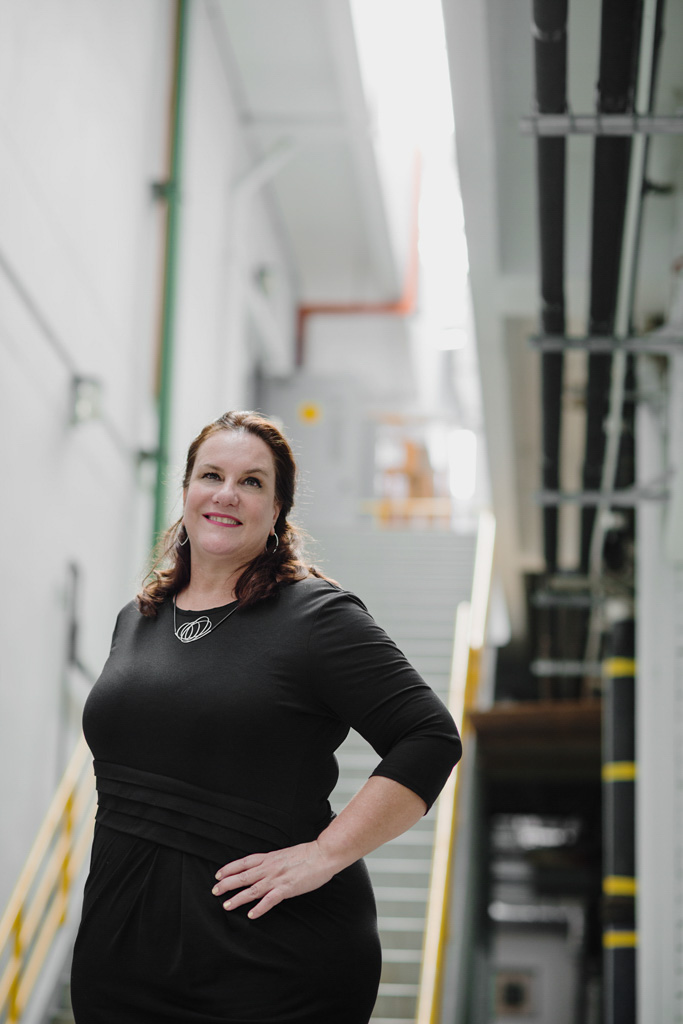From faceless business behemoths to celebrity-driven green groups, from the religious right to the political left, from startups that swim in other people’s money to self-funded crusades that hope to bring free lunches to public schools, nearly every organization that wants to connect with an audience has benefited from the services of communications and marketing professionals.
But do we still see organizations for what they really are or are we gazing at dress-up versions that play the tune they want us to hear? We ask leading communications specialists how they see the shifts in their profession.

- MS. JOCELYN NG-FOO | FOUNDER & DIRECTOR LIVINGWORD COMMUNICATIONS
- MS. ILLKA GOBIUS | FOUNDER AND DIRECTOR PINPOINT PR
- MS. NAEEMA ISMAIL | GENERAL MANAGER OF YING PR
- MR. MARC HA | MANAGING DIRECTOR, CLIENT STRATEGY, APAC TEXT 100
- MR. LARS VOEDISCH | PRECIOUS COMMUNICATIONS
Do you ‘control’ what your clients have to say?
The days of crafting key messages and issuing a press release with the intention to ‘control’ the narrative are certainly over. While communications practitioners can shape the message, there are other factors which influence how messages are perceived by the intended audience. With earned media, journalists covering a story on the company will source for industry commentary, including those on social media, to provide an objective point of view.
Contrast it to paid media where the company controls the frequency, placement and positioning of messages by purchasing the rights to do so. Such controlled communications may be more comfortable to many executives. However, research has demonstrated that organic or incentivized peer-to-peer recommendation is one of the most powerful forces in building trust, gaining referrals, and recommendations.
Looking internally, employees are often times an overlooked segment in contributing to the corporate narrative as they experience the corporate brand first-hand. Employees who are committed and dedicated to the company’s success are more likely to have a positive outlook and this naturally spills over through social media and informal networks. Conversely, employees who are not engaged can damage a business’s reputation through high turnover, poor service delivery, low morale and negative comments on social media.
As such, strategic messaging is most effective when it is consistently delivered across all marketing and communications channels, and amplified by customers, industry and partners reinforcing the same corporate positioning and value proposition.
- MS. JOCELYN NG-FOO | FOUNDER & DIRECTOR LIVINGWORD COMMUNICATIONS
- MS. ILLKA GOBIUS | FOUNDER AND DIRECTOR PINPOINT PR
- MS. NAEEMA ISMAIL | GENERAL MANAGER OF YING PR
- MR. MARC HA | MANAGING DIRECTOR, CLIENT STRATEGY, APAC TEXT 100
- MR. LARS VOEDISCH | PRECIOUS COMMUNICATIONS
Ms. Illka Gobius | Founder and Director Pinpoint PR
Have PR communications and marketing taken over the media’s role – and income – by becoming content providers?
I do think that statement is fair to an extent, but you can’t say wholesale that PR has taken the media’s income, because one must also consider that Google is the world’s largest advertising company and that social media apps take their fair share of advertising revenue as well.
Journalists are opting to be freelancers these days because if they are good, they make more money freelancing than they do as full-time journalists. This, along with declining advertising revenues, has left newsrooms scant of human resources, especially at a time when newsrooms need more content than ever. That means that it’s been opportune for PR to step in and provide them with content.
Pinpoint has almost as many journalists as consultants on staff. Journalists help us determine the story angle and craft the story, along with informing us as to how to best pitch to the editors. Most of the journalists we work with still have relationships with their previous editors. Producing content this way benefits everyone in the value chain.
I’d even argue that newsrooms are becoming too dependent on PR and newswires for their content. One model we see a lot is that the newsroom bullets out short form content (breaking news, market news) in blogs, or writing long form content (feature news). The mid-length stories are being provided by PR and newswires. This of course varies by publisher, but we are seeing that a lot in the newspaper model.
I don’t think publishers have been quick enough to develop new revenue models. The tidal change swept over them before they even realised what was happening, but the trend was clear long before many of them acted on it. Subscriptions have long been a mainstay revenue stream and should continue. As an agency, we consciously buy subscriptions for the news we read daily – from local to international press. Media needs to do its part to educate consumers that good quality journalism is worth buying.
- MS. JOCELYN NG-FOO | FOUNDER & DIRECTOR LIVINGWORD COMMUNICATIONS
- MS. ILLKA GOBIUS | FOUNDER AND DIRECTOR PINPOINT PR
- MS. NAEEMA ISMAIL | GENERAL MANAGER OF YING PR
- MR. MARC HA | MANAGING DIRECTOR, CLIENT STRATEGY, APAC TEXT 100
- MR. LARS VOEDISCH | PRECIOUS COMMUNICATIONS
Ms. Naeema Ismail | General Manager of Ying PR
What’s behind the shift in the way information is disseminated?
Most definitely, the Internet. It brought about instant, searchable news at our fingertips, citizen journalism that forces the media to rethink breaking news, and social media that point us to the news that we actually consume.
These days, we often find information via Google, followed closely by Twitter, Facebook, and LinkedIn. Audiences no longer just wait for the latest hard copy of The Business Times or Wall Street Journal for yesterday’s news. They demand instant news, organized according to specific topics by aggregators and curators like Pulse and Flipboard. Whether it’s a story on artificial intelligence or what Jennifer Lawrence wore to the Oscars – algorithms from the likes of Google, Facebook, and LinkedIn determine what actually shows up in search results.
Is there a role for journalists today? We think so, but perhaps in a slightly different capacity. They can insert local flavour, deep-dive into stories, and put two and two together to draw conclusions and provide insightful analyses. What they must do is make sure their stories are optimized so they get picked up by the algorithms that rule the world today.
Journalists are under tremendous pressure to deliver more news, faster and better than their competitors. On the other side of the stream, the content produced by PR people – and therefore the content we offer to the media – must be well-researched, well-written and optimized for today’s real news channels. If it doesn’t hook Google, no one will see it.
- MS. JOCELYN NG-FOO | FOUNDER & DIRECTOR LIVINGWORD COMMUNICATIONS
- MS. ILLKA GOBIUS | FOUNDER AND DIRECTOR PINPOINT PR
- MS. NAEEMA ISMAIL | GENERAL MANAGER OF YING PR
- MR. MARC HA | MANAGING DIRECTOR, CLIENT STRATEGY, APAC TEXT 100
- MR. LARS VOEDISCH | PRECIOUS COMMUNICATIONS
Mr. Marc Ha | Managing Director, Client Strategy, APAC Text 100
Are people justified in saying that you’ve taken over the media’s role?
What is the definition of ‘media’ today? Arguably, Facebook and Google are the biggest media companies on the planet. They don’t create original content, but their platforms command the largest ‘readership’ than all the news media combined.
Clearly, the Internet and digitization is disrupting existing paradigms and business models as we’ve known them. These transformational changes have led to a shift in focus away from media properties towards the content itself.
With the disintermediation created by the Internet, people can now access content from a multitude of sources, on their own terms, and in their own time. Vice versa, companies can now leverage technology platforms to communicate directly with their audiences.
Corporate storytelling and content marketing have emerged as popular concepts to describe how companies are producing and delivering content directly to audiences. I refrain from using another popular term, ‘brand journalism’, because of its inherent oxymoron.
Like it or not, media are competing with brands for eyeballs. But does this mean that traditional news media will get replaced by brand journalism? Absolutely not. There is a role for both. Adobe, DHL and Rolls-Royce are among the many companies that have embraced brand journalism to augment – not replace – their media relations efforts.
In fact, the converse is true. Good journalism is more valued today than ever in a world plagued by content pollution and alternate facts. Readers still rely on credible institutions like the New York Times for objective reporting and insightful features.
But when brands have stories that they know will be interesting for their audiences but don’t necessarily fulfill the criteria for newsworthiness to make it into the news, these brands now possess the ability to publish and deliver their brand stories directly to their audiences.
So in summary, news journalism and corporate storytelling each have a role to play. In my opinion, the issue today is not about whether journalism is under threat, but how to make all of us better and more discerning readers.
- MS. JOCELYN NG-FOO | FOUNDER & DIRECTOR LIVINGWORD COMMUNICATIONS
- MS. ILLKA GOBIUS | FOUNDER AND DIRECTOR PINPOINT PR
- MS. NAEEMA ISMAIL | GENERAL MANAGER OF YING PR
- MR. MARC HA | MANAGING DIRECTOR, CLIENT STRATEGY, APAC TEXT 100
- MR. LARS VOEDISCH | PRECIOUS COMMUNICATIONS
Mr. Lars Voedisch | PRecious Communications
Do you feel responsible for the message that goes out to the public?
PRecious is more than just a communications consultancy. We’re partners to our clients, working in tandem with them to enhance their reputations while helping them meet their business objectives.
It is exciting to see that our clients want to grow their exposure in the region or even globally with us. As we look forward to another six – or 60 – years, we’ll honor that trust and remain focused on delivering results that matter in this ever-changing environment.
This also means that integrity is more important than just delivering short-term gains. In consequence, this led to a situation where we had to decline staring a cooperation when we saw that our own values would be compromised.
As founder, I don’t only have a responsibility to our clients, but equally to the public and its intermediaries, the media and influences and first and foremost our PRecious staff.
Public relations is about actively managing the relationships of a brand or person with its key audiences. This could be focused on media relations – or completely different things. We have to accept that our mobile phone screen is the general window to the world, so our ultimate goal is to make our brand happen on this tiny space of awareness real estate, and activate a trigger: E.g. gratitude for an education effort or happiness for having been entertained.
Today, this means you can’t survive without applying tactics across earned, owned and paid media anymore. Modern PR/Comms/Marketing professionals are less divided by their actual activities but rather by their ability to support clients’ strategic goals and business objectives.





















 Back
Back
